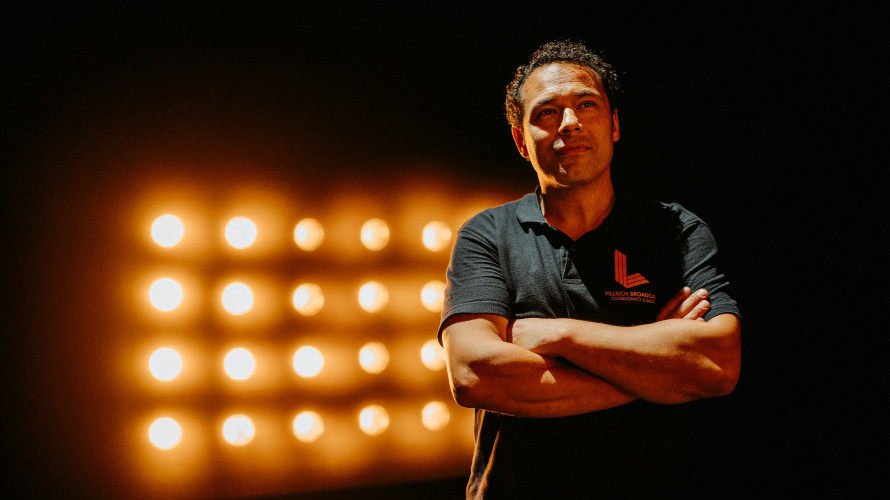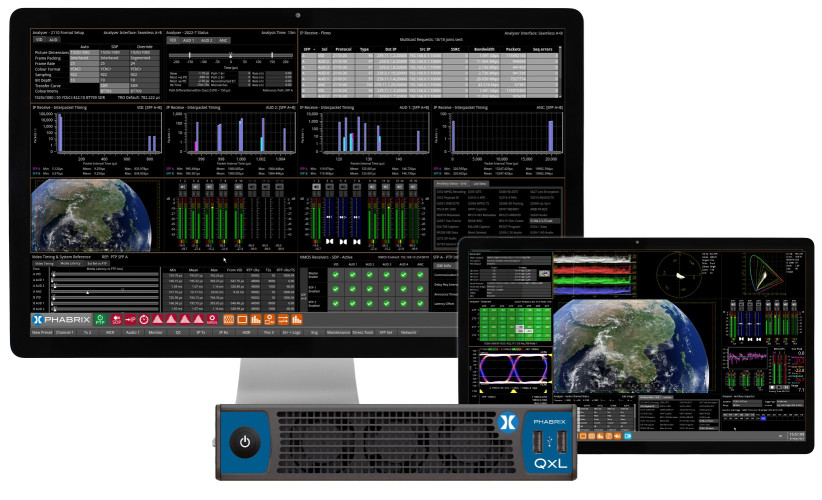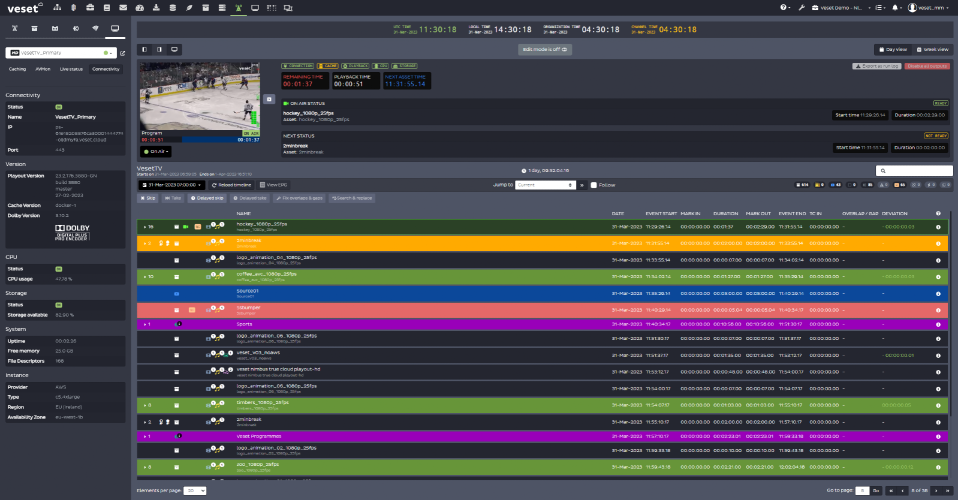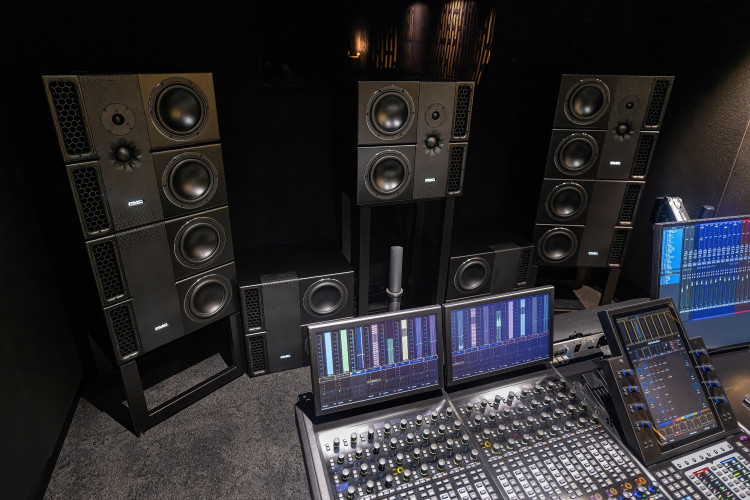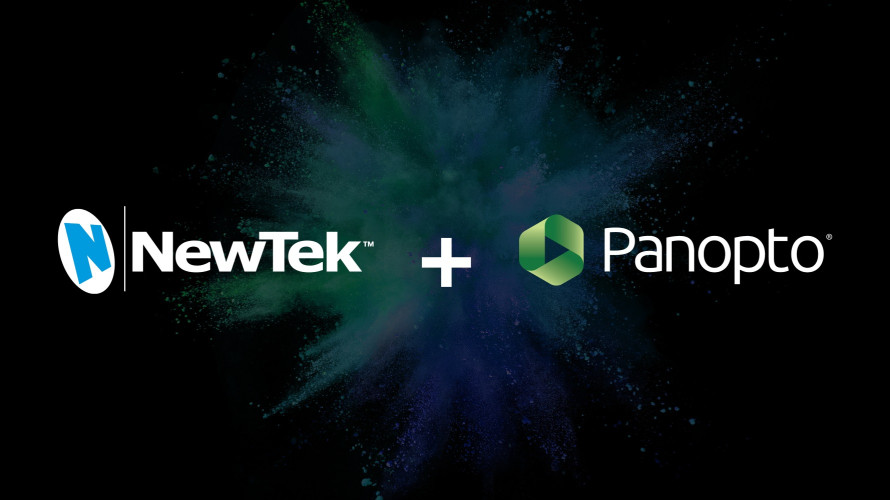BVE 2011 retrospect

Author: Bob Pank#
Published 1st April 2011
BVE 2011 had much of the buoyancy and buzz of an IBC. The organisers claimed an attendance of over 15,500 visitors and 240 exhibiting companies. Many of the UK-based stalwarts who make the annual pilgrimage to Amsterdam could be seen exploring the show, confirming that BVE is now taken seriously by mainstream broadcasters.
It is perhaps over-optimistic to expect much innovation just two months before NAB though in fact some manufacturers were pre-showing products that will be formally introduced in Las Vegas. The following is an alphabetical encapsulation of some of the new kit that attracted my attention.......
Aspen Media exhibited the Stagetec On Air 24 production mixing console, designed for radio and small studios. This allows each buyer to predetermine the layout of the work surface and to add further banks of faders if or when required. As with all the other desks in the Stagetec range, the On Air 24 is configured and controlled via the Nexus routing system.
ATG Broadcast announced its appointment as a UK-based reseller of the Viewcast product range, including Niagara streaming media modules, Osprey video capture cards and software-based processors. Designed for broadcast applications, the Niagara 7500 simplifies the delivery of high-definition video over IP and mobile networks including live streaming to Apple iPhones and iPads. Audio inputs include analog stereo, two channels of AES/EBU and up to eight stereo pairs of embedded SDI audio. Video pre-processing capabilities include closed-caption extraction and rendering, deinterlacing, inverse telecine, bitmap overlay, scaling and cropping. The Niagara 7500 comes standard with ViewCast SimulStream technology which allows a single 1080i HD video source to generate several video streams simultaneously.
A new addition to the Cel-Scope3D stereoscopic analyser was introduced by Cel-Soft. An automatic logging option generates a printable report of depth budget and depth plot for easy reference by cameramen during a shoot or by editors during 3D post-production. A depth chart is automatically created, logging against timecode the maximum and minimum depth values employed, together with the range in use.
Dolby introduced to BVE the PRM-4200 professional reference monitor, claimed to be the first monitor capable of displaying the full dynamic range, high contrast ratio, and wide colour gamut of modern digital cameras and film stocks. It is designed for use with the Harris PRM-Audiosync AES audio synchroniser which automatically matches the audio delay to the PRM-4200 video delay, removing the need for manual changes to audio delay when switching modes or formats. The monitor's backlight consists of 1,500 RGB LED triads, with each R, G, and B light element independently controlled, frame by frame, to create a full-colour backlit image.
EVS demonstrated its new Dualpower technology which enables the company's video production servers to handle up to four 3D or 1080p channels. Capabilities include 3D loop recording, liver 3D slow motion, cue, clipping and instant editing.
Eyeheight's innovative TVtweetCaster system enables viewers to send in tweets using a programme's Twitter hashtag for display on a superimposed ticker. The display includes the ticker, two bitmap layers for ticker background, channel ident, three fixed text fields and a timecode-driven clock. Multiple layouts are designed using Eyeheight's netCrawler software, which can be used to configure fonts and colour settings and to preview the ticker text.
For-A showed its new HVS-350HS 1.5 M/E compact low-cost vision mixer. This supports a wide range of on-air presentation styles and reduces the need for external interface and monitoring equipment. The standard eight HD/SD-SDI inputs and outputs have frame synchronisers on each input and resizing engines on four. Asynchronous signals, including HD and SD, can be directly mixed into the programme. The range of inputs can be extended to also include analogue and PC video. Also shown was the LTR-100HS Video Archive Recorder. This has front-panel VTR-style controls and an LTO-5 data-tape transport which provides 1.5 terabytes of storage per cassette, representing 50 hours of 1080/59.94 HD at 50 Mbit/s. The LTR-100HS inputs/outputs HD/SD-SDI.
Gekko Technology introduced to the UK market its karesslite 6006-DD, an LED soft light designed for studio and location use. It has twice the number of emitters and hence twice the brightness of the standard karesslite 6006. Available in daylight (5,600 kelvin) and tungsten (3,200 kelvin) versions, it incorporates a 6 x 12 emitter format in a 300 x 300 millimetre panel. The 6006-DD is the same size as the 6006 but delivers the same 2600 lux at 1 metre brightness as the 600 x 300 millimetre karess 6012. It can be used as a key light (with louvre) or fill, with consistent colour through the dimming range.
Holdan Ltd introduced Sonnet Technologies' Qio professional universal media reader/writer in Britain for the first time. Qio allows production teams to transfer files to edit stations from camcorders and DSLR storage cards concurrently faster than with standard USB 2.0 or Firewire devices. Qio connects to workstations through a PCI Express bus interface and supports HD video memory card formats such as Sony SxS, Panasonic P2, Compact Flash, SD(HC), and SDXC cards.
Marquis Broadcast introduced a new version of its Parking media archive and interchange system. Expanded features include support for Apple ProRes and DNxHD. Parking uses a single-click step to facilitate movement of edit sequences and timelines, including edit decisions, subclips, transitions, effects and audio levels, from Avid or Final Cut Pro dedicated edit storage to generic low-cost storage. Operating as a background process, Parking allows operators to continue editing while the sequences are being parked. The entirety of each selected clip in the sequence is transferred and converted for archive. As well as supporting ProRes and DNxHD, Parking can also handle JFIF, XDCAM HD and Avid for Mac files.
NewTek demonstrated its new TriCaster TCXD850 CS, a hardware control surface for the TriCaster TCXD850 high definition portable live production system. The TriCaster TCXD850 CS provides a physical connection to the 24-channel system's functions and effects. TriCaster TCXD850 CS hardware provides illuminated pushbuttons, twist knobs, T-bar and a three-axis joystick. The TCXD850 comes with redundant power and removable storage, eight external sources, eight virtual/mix channels, live HD virtual sets and matte generation; overlay with rotation, positioning and scaling in 3D plus animated effects; HD live streaming; increased media player capabilities, and multi-view monitoring of all input an outputs.
PAG introduced a new version of its budget broadcast battery, the PAG L95e 95 watt-hour Li-Ion battery. Compatible with Anton-Bauer chargers and camera mounts, the PAG L95e (Model 9310A) is a 14.8V 6.5Ah battery with a maximum continuous output current rated at 7 amps. It has been designed as a replacement for the Anton-Bauer Dionic 90 and is directly compatible with cameras that incorporate the Anton-Bauer battery mount. The L95e can be charged using existing Anton-Bauer Li-Ion compatible chargers.
Polecam's new GoalCam and StadiumCam are designed for use in outside broadcast coverage of stadium sports such as rugby, soccer and hockey. The system consists of two Goalcams and one StadiumCam. Each camera incorporates a 1/3 inch CMOS HD-SDI imager allowing the deployment of ultra-wide-angle lenses with high corner resolution. Both GoalCams are fitted with 125 degree lenses giving images of the entire goal mouth. StadiumCam is equipped with a 170 degree fisheye lens and, like the GoalCams, can deliver 1080i line resolution at 50/59.94 Hz. An optional downconverter is available to provide SD-SDI output where required.
Pyser-SGI Limited exhibited the new TV-logic LVM-553W(3G)55 inch 16:9 multi-format HD/SD LCD monitor. Features include 1920 x 1080 pixel resolution, support for all commonly used HD/SD formats, 1080p50/60 single link 3G (level A and B) and dual link 4:4:4 sources. HDMI and DVI inputs are also provided. The monitor uses 120 Hz real-time frame rate conversion and white LED backlighting. Contrast ratio is 5000:1 contrast ratio.
Teranex's real-time 2D to 3D conversion technology was demonstrated on the stand of the company's UK distributor, Preco. The VC1-2D-3D option for the dual channel VC100 provides the ability to convert live or pre-recorded 2D content for 3D distribution, while keeping all of the VC100 's features which include frame synchronising and more than 250 format and frame rate conversions. Also exhibited was the Teranex Mini format and standards converter which provides full proc-amp controls, handles eight channels of embedded digital audio and can be operated and updated via browser-compatible software. Features include smart 4:3/16:9 aspect-ratio conversion, PixelMotion de-interlaced format conversion, multi-directional diagonal filtering, temporal recursive noise reduction and per-pixel video/film detection to ensure correct output cadence.
Looking ahead
The BVE organisers are now planning a 'BVE North' variant to be held at the Manchester Central venue 16-17 November. If you are not already based in that city and are contemplating a visit by rail, book the tickets with care. The last time I went to Manchester was on a peak-period rail ticket costing just short of £200, nearly three times a return air ticket between London and Amsterdam.










